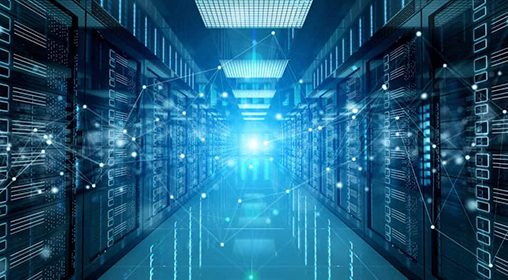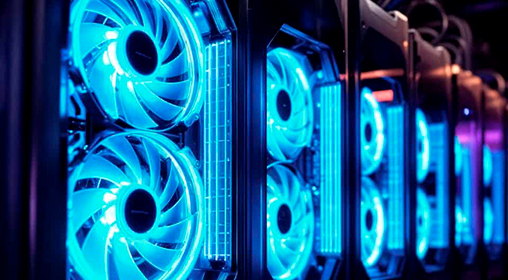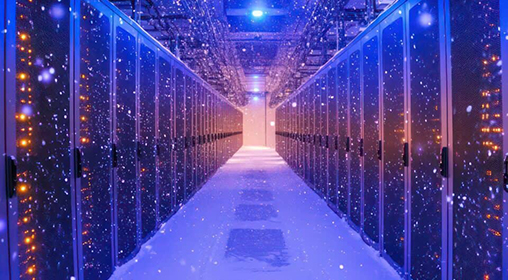



Is Liquid Cooling Worth it for Your Data Center?
Have you ever felt choked, like the air around you just isn’t enough to keep you going? That’s exactly the situation many data centers are facing today.
Air cooling methods are still prevailing in the market, and have served the industry well! Data Center Dynamics reported in July 2024 that 80% of data centers still employ air cooling, but the truth is that air cooling is quickly approaching its limits. As the world becomes increasingly AI-driven and tech-dependent, data centers are growing larger and more complex, tasked with processing unprecedented amounts of data faster and with zero downtime. In this evolving landscape, traditional air cooling systems will struggle to keep up with the heat densities of hyperscalers and next-generation facilities.
As the role of cooling for data centers cannot be denied, a more effective solution is crucial to support the future of high-performance and sustainable facilities — and data center liquid cooling is stepping in to meet the challenge.
Liquid Cooling in a Nutshell
Liquid cooling represents a fundamental shift in data center heat management, moving beyond the limitations of traditional air cooling systems to meet the demands of modern computing. At its core, the technology utilizes a network of pipes carrying liquid coolant to absorb and dissipate heat from IT equipment. With liquids capable of transferring heat much more efficiently than air, this method becomes a worth-considering solution for modern, AI-driven data centers.
There are two primary types of liquid cooling technologies in use today:
- Immersion Cooling: IT components are completely submerged in non-conductive liquid, efficiently removing heat while protecting against environmental factors like dust and humidity.
- Direct-to-Chip Cooling: Coolant is channeled directly to heat-intensive components, such as CPUs and GPUs.
Both methods leverage liquids’ thermal transfer properties, enabling data centers to achieve reliable and efficient cooling while scaling to meet the demands of advanced applications.
So Is It Worth It? The Benefits of Liquid Cooling for Data Centers
Higher Cooling Capacity
Perhaps the most important benefit of liquid cooling for data centers is its enhanced thermal management and cooling performance. Unlike air cooling systems, which typically max out at around 50kW per rack, liquid cooling systems can comfortably deliver twice this capacity and scale beyond 100kW per rack. Simply put, this capability allows data center operators to cool more with less, removing the need for complex airflow management and the over-provisioning typically required in air-cooled setups.
Superior Energy Efficiency
Liquid cooling stands out for its remarkable energy efficiency, especially compared to traditional air cooling. Absorbing heat directly from components eliminates the need for fans, so that optimal temperatures can be maintained without any energy consumption. This alone can reduce server energy consumption by 4-15%, depending on airflow requirements. On top of that, studies conducted with Nvidia have demonstrated a 10.2% reduction in total data center power consumption and over 15% improvement in Total Usage Effectiveness (TUE) after implementing liquid cooling. Since cooling system energy is typically the second-largest energy consumer after IT equipment, these efficiency gains translate into substantial operational cost savings and a reduced carbon footprint.
Waste Heat Recovery
The energy efficiency mentioned earlier is achieved not only through reduced reliance on electrical devices (fans) but also through the effective conservation and reuse of energy (green cooling). Specifically, with both forms of liquid cooling (immersion and direct-to-chip), data centers can effectively capture and repurpose waste heat generated during the liquid cooling process. This recovered heat can be utilized for facility or district heating and is particularly beneficial in cold climates. This capability can significantly reduce operational expenses and overall carbon footprint.
Enhanced Server Reliability
In data centers, there are two critical aspects of reliability that proper cooling can contribute to:
- Stable operating temperatures
- Extended lifespan of critical IT equipment
The good news is that data center liquid cooling supports both of these fronts. The improved thermal control leads to a more consistent and stable temperature. Then, as sensitive hardware components are not exposed to frequently fluctuating temperature and humidity levels, they have less thermal stress, enhancing their durability. This condition ensures that even high-intensity operations can run continuously without performance degradation, making it particularly valuable for mission-critical applications.
Improved Working Environment
This benefit of data center liquid cooling might not be entirely related to the data center operation, but it does make a huge difference for the teams working in these facilities. To start, removing the vast majority of heat from the space (70-95%, depending on the liquid cooling method) keeps the ambient temperature comfortable. This contrasts with some air-cooled facilities, where hot aisles create challenging working conditions.
Additionally, removing or eliminating server fans and traditional air-cooled units significantly decreases noise levels. This quieter operation benefits personnel working in these facilities and aligns with OSHA’s occupational regulations and health standards around excessive noise exposure.
Lastly, data centers utilizing liquid cooling require less physical space. The elimination of hot and cold aisle layouts and the reduced need for large air-handling units allow for more compact designs. This space efficiency is particularly valuable in urban, high-rise, or edge computing scenarios where space constraints are critical. In a 100% liquid-cooled setting, IT equipment can be placed more flexibly, opening up new possibilities for data center design and layout.
These combined benefits of liquid cooling create a safer and more comfortable working environment for data center staff.
Lower Total Cost of Ownership (TCO)
Although the initial investment in liquid cooling systems may be higher, their long-term benefits significantly reduce overall costs. The lower energy consumption, minimized cooling infrastructure, and improved hardware longevity contribute to a lower TCO, making it a financially sound option over time.
Data Center Liquid Cooling is Here to Stay
Given all the benefits described above, liquid cooling is a game changer for data centers. Indeed, it is rapidly gaining traction in the data center industry as organizations adopt advanced technologies like AI, blockchain, and cryptocurrency applications.
According to the International Data Corporation, as of July 2024, approximately 22% of data centers were already incorporating this technology in some capacity, with projections suggesting this number could rise to nearly 50% within the next few years. This vision is also reflected in Dell’Oro Group’s report, pointing out that the liquid cooling market is projected to reach $2 billion by 2027, driven by an impressive 60% compound annual growth rate (CAGR) from 2020 to 2027.
Is Liquid Cooling the Right Choice for Your Data Center?
While data center liquid cooling offers remarkable advantages, it’s important to acknowledge that implementing this technology requires careful consideration. The initial investment is typically higher than traditional air cooling systems, and the transition often necessitates either retrofitting existing servers or redesigning them entirely. Additionally, data center staff need specialized training to operate and maintain liquid cooling systems effectively. However, for facilities seeking optimal temperature control, the long-term benefits of liquid cooling for data centers often outweigh these initial challenges.
At AIRSYS, we understand the evolving needs of data centers and offer cutting-edge solutions designed to improve efficiency and performance. Among our range of data center cooling solutions, the LiquidRack™ system takes liquid cooling to the next level with its advanced capabilities.
Whether you’re building a new facility or upgrading an existing one, and considering what cooling system is right for your data center, don’t hesitate to check with us. Our team of experts is ready to help you explore your options, including how liquid cooling can transform your data center operations. Contact us today to discuss your data center’s cooling requirements.
Related Posts

Data Center Energy Efficiency: Which Metrics Matter Most?
Cooling systems drive a large share of data center energy use, making them one of the most critical areas to target for improving overall energy efficiency. As demands on data centers increase, cooling will be key to powering the next generation of data centers, further emphasizing the need to measure and manage its impact.
read more
Colocation Cooling Strategies: From Air to Liquid and Everything in Between
Keeping colocation data centers cool isn’t just about temperature; it’s about trust. With multiple tenants relying on shared infrastructure to run critical operations, even minor fluctuations in cooling performance can ripple into major disruptions. As high-density data centers become the norm, the challenge grows, bringing greater heat loads, increased system complexity, and a shrinking margin for error.
read more
Data Centers Scale on Flexible Cooling Strategies
Can you remember going on a road trip 15 years ago? Or how you got around your hometown? Chances are, you used a paper map. At the time, it was the only way to navigate unfamiliar areas. But as cities grew, routes developed, and technologies we couldn’t have imagined back then emerged, paper maps could no longer meet the need. Static maps couldn’t keep up with infrastructure expansion, let alone provide real-time traffic updates or recommend the best routes. And so, gradually, paper maps faded from our lives.
read more